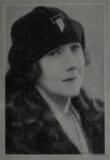Born: Established: ca. 1876 Auckland, Auckland (Region), North Island,
 8390470945335051547.jpg
8390470945335051547.jpg
Born: Established: ca. 1876 Auckland, Auckland (Region), North Island,
 8390470945335051547.jpg
8390470945335051547.jpg
Portrait photograph of Rosemary Rees appears in Bernice May's article on Rees in The Australian Woman's Mirror, 31 July 1928, p. 11.
Bernice May, who knew Rees personally and corresponded with her while Rees was in London, relates that Rees was not the first writer in her family. Her father, the barrister and Member of Parliament, W. I. Rees, published a novel and a biography of his friend, Sir George Grey.
Rees's novel, Heather of the South, was serialised in the Sydney Morning Herald at the same time as she was playing the part of Frenchwoman in the play 'Good Morning, Dearie', leading one admirer to comment on her versatility. Two of Rees's novels were published in The Australian Woman's Mirror, Life's What You Make It (1927) and Wild, Wild Heart (1928) and also in the London Evening Standard before appearing in book form.
In her article May offers favourable critical comment about several of Rees's works and puts forward her opinion that Rees underestimates her talents.